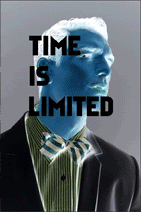 On January 6th, 1966, in the USSR, a patient was brought in for surgery. The patient had been diagnosed with intestinal bleeding. A cancerous tumor was found and removed, but the patient's heart was weak. He never awoke.
On January 6th, 1966, in the USSR, a patient was brought in for surgery. The patient had been diagnosed with intestinal bleeding. A cancerous tumor was found and removed, but the patient's heart was weak. He never awoke.The patient's name was Sergei Korolyov, and he was known as the Chief Designer. Had he lived, the Soviet Union might have planted their flag on the moon.
Born in Ukraine in 1907, Korolyov's parents separated when he three years old. His mother was determined that he receive a superlative education, so young Korolyov spent his lonely childhood studying away at Kiev. It was there that he displayed an aptitude for mathematics. In 1913, he saw an air-show which fostered a lasting interest in aviation. Later his mother married an electrical engineer, and Korolyov's academic pursuits were further encouraged. He kept on studying right through the Russian Revolution, and spent the 1920's designing and flying gliders.
Korolyov launched into the thirties by marrying and having a daughter with Xenia Vincentini, the lady he'd been dating for six years. Upon graduation, Korolyov's engineering skills made him highly sought after by the government and he found employment designing aircraft. He co-created a government-funded rocket development organization called the Jet Propulsion Research Group and created several early liquid-fueled rockets. With their success, the government became interested in the military potential of the rockets and expanded the scope and funding of the research group. Korolyov was appointed chief engineer. Life could hardly be any better.
In 1938, Korolyov was accused by his primary scientific rival, Valentin Glushko, of deliberately hindering progress at the institute. He was tortured into signing a confession and then sentenced to ten years at a prison camp. Korolyov tried desperately to reduce his sentence, but his appeals for leniency fell upon deaf ears. For months he labored at a gold mine in Kolyma, working in the most grueling conditions. Ultimately, his intellectual background resulted in his re-location to a camp specializing in scientific slave-labor. There, he and other captive scientists designed bombers and explosive rockets for the USSR's war against Nazi Germany. By this point, he had lost nearly all of his teeth due to his time in Kolyma.
Korolyov and his prison colleagues were discharged in 1944 and he went straight to work creating ballistic missiles and rocket engines for the military. It wasn't until the 1950's, when he officially joined the Communist Party, that the charges against him were dropped and he was finally exonerated. His time in the labor camps had left him a quiet, brooding man. He and Xenia divorced after he had an affair with another woman, whom he subsequently married. His relationship with military grew increasingly ugly, but his knowledge of aviation and propulsion made him invaluable to their Cold War efforts. He proved his worth with the devastating success of Sputnik and its dog-laden sequel Sputnik 2. The space race had officially begun.

With both America and Russia determined to master space, each nation became more ambitious. In 1961, the Vostok Space Program launched Yuri Gagarin into orbit, making him the first man in space. For an encore, Vostok 6 carried Valentina Tereshkova into orbit, making her the first woman in space. In 1965, the Alexei Leonov made the first space-walk. Probes were successfully launched to the moon, and space became increasingly populated with new Soviet satellites. All of these accomplishments were made possible by Korolyov, who directed the program with a taciturn and resolute manner. For security purposes, his name was never officially used and he was referred to as "the Chief Designer" or (in Cyrillic) "SP." The program achieved so much without the sophisticated computer equipment and greater resources of its American counterpart, and this spoke volumes about Korolyov's leadership.
With each success, the Soviet government demanded greater results from the program and with each failure, they demanded the program work harder. Korolyov had earlier suffered from an heart attack, and his condition drove him to work at a frenzied pace. The stress was demolishing his body. He later developed a gall-bladder problem and then an irregular heartbeat. His hearing was also degrading, thanks to years of ear-shattering rocket launches. Finally he died in 1966, just as he was masterminding the USSR's moon launch plans. Two years later, their famed cosmonaut Gagarin perished in a training exercise and then America delivered a death-blow with Apollo 11. The Soviet space program was defeated.
Korolyov was posthumously awarded a Lenin Prize in 1971, and has since had several Moon craters and even a town in Moscow named after him. Ironically, those that worked with him recall his gloomy fondness for saying "we will all vanish without a trace."

But don't take my word for it. You can read all about it in a book!
-A BBC entry on Korolyov
-Another biography of Korolyov (with pictures!)








I never knew the sad story of Korolyov's death. What a goddamn waste.
ReplyDeleteGranted, it's a utopian sentiment, but I can't help but wonder what the world would have been like if Korolyov and other scientists had all been working together on a united space exploration attempt. Hell, we could have been on Mars by now.
There's something to be said for utopian sentiments Leon and Monday. Something to be said...
ReplyDelete